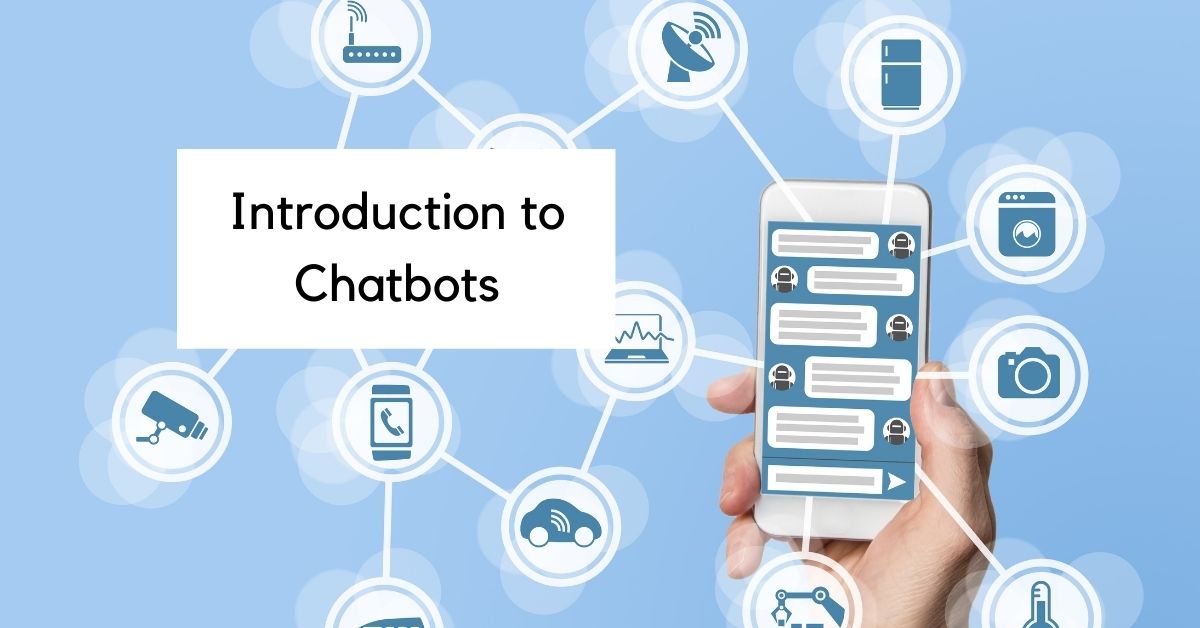The Ultimate Guide to Chatbots: Design, Implementation, and Best Practices
In recent years, chatbots have become increasingly popular as a tool for businesses to engage with customers, provide customer support, and automate certain tasks.
A chatbot is a computer program designed to simulate conversation with human users through messaging interfaces, such as messaging apps, websites, or voice assistants. Chatbots can use NLP and machine learning algorithms to understand and respond to user input.
This guide will provide an overview of chatbots, the different types of chatbots, best practices for designing and implementing chatbots, and what the future of chatbots looks like.
Types of Chatbots
Chatbots can be deployed in a variety of contexts, from customer service, support, sales and marketing. They can be used to automate routine tasks, such as scheduling appointments, processing orders, or sending out notifications.
Chatbots can also provide a personalized and engaging experience for users, helping to build customer loyalty and satisfaction. Chatbots can be divided into two main categories: rule-based chatbots and AI-based chatbots.
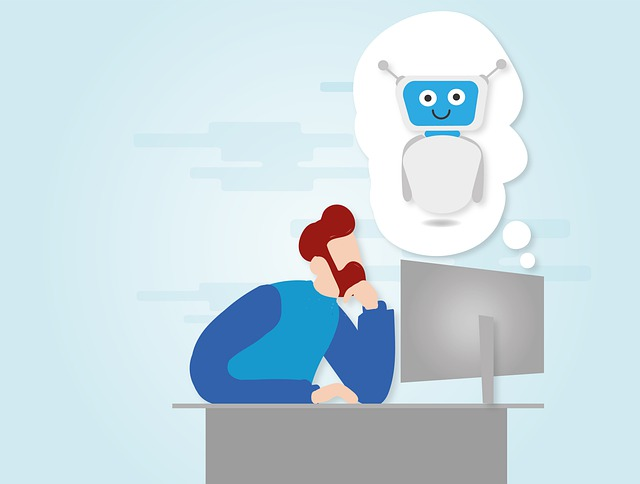
Rule-based chatbots
Rule-based chatbots are programmed with a set of predetermined responses based on specific keywords or phrases. These chatbots can only respond to user input that matches their programmed responses.
Rule-based chatbots are best suited for simple and straightforward tasks, such as answering frequently asked questions or providing basic information. Rule-based chatbots are relatively easy to design and develop, but they can be limited in their capabilities.
AI-based chatbots
AI-based chatbots use machine learning algorithms to understand and respond to a wider range of inputs. They can analyze user inputs, identify patterns, and generate appropriate responses.
AI-based chatbots can learn and improve over time, becoming more effective and efficient at handling user queries and requests. They are well-suited for more complex interactions with users, such as providing personalized product recommendations or handling customer complaints.
Designing a Chatbot
When you set out to create a chatbot, it is important to consider its purpose and audience, create a chatbot personality, craft responses, and test and refine the chatbot.

Identifying the purpose and audience
The first step in designing a chatbot is to identify its purpose and audience.
- What tasks do you want the chatbot to automate or assist with?
- Who is the target audience for the chatbot?
Understanding the purpose and audience will help you create a chatbot that meets their needs and expectations.
Creating a chatbot personality
Creating a chatbot personality can help make the chatbot more engaging and relatable to users. The chatbot personality should reflect the brand voice and tone, and should be consistent across all messaging channels. A chatbot personality can be conveyed through language, humor, or visual elements such as avatars or emojis.
Developing a relatable personality for a chatbot can offer several benefits for businesses.
Firstly, it can help to create a positive and memorable customer experience, which can lead to increased customer satisfaction and loyalty. By providing a personalized and engaging interaction, chatbots can help to build brand affinity and trust, which can ultimately lead to increased sales and revenue.
Secondly, a bot with a relatable personality can help to humanize the brand and make it more approachable. This can be especially important for businesses in industries that are typically viewed as impersonal or unapproachable, such as finance or healthcare. By giving the chatbot a friendly and approachable personality, businesses can help to break down barriers and create a more welcoming and inclusive environment for users.
Thirdly, a chatbot personality can help to create a sense of consistency and familiarity across different messaging channels. By maintaining a consistent tone and personality, businesses can help to reinforce their brand identity and create a cohesive customer experience, regardless of where the user is interacting with the chatbot. This can help to build trust and confidence in the brand, as users know what to expect from the bot and can rely on it to provide consistent and accurate information.
When done correctly and in the appropriate context, a chatbot personality can be a valuable tool for companies looking to improve customer engagement and satisfaction.

Crafting responses
Crafting effective responses is a critical component of a successful chatbot’s development. Responses should be tailored to the customer’s needs and preferences, and should be designed to provide clear, concise, and helpful information. The language used in responses should be natural and conversational.
There are several different types of chatbot responses that can be used to simulate conversation with a customer.
For example, if a user asks for information about a product or service, the chatbot could provide a brief overview of the product or service, along with links to additional resources such as product manuals or reviews. If the chatbot is designed to provide customer support, it may ask follow-up questions to clarify the user’s issue before providing a solution or connecting the user with a human representative.
In some cases, chatbots may also be designed to provide personalized recommendations based on the user’s preferences and previous interactions with the chatbot. For example, if a user has previously expressed interest in a particular type of product or service, the chatbot could provide recommendations for similar products or services that the user may be interested in.
Additionally, chatbots can be programmed to provide entertaining or engaging responses in order to keep users interested and encourage continued interaction. For example, a chatbot designed for a clothing retailer may use humor or playfulness in its responses in order to reflect the brand’s personality and create a more engaging user experience.
It is important to note that crafting multiple effective responses is an iterative process. Responses should be tested with real users in order to identify any areas where improvements can be made, and should be refined based on user feedback.
By continually refining and improving responses, businesses can ensure that their chatbots are providing the best possible user experience and driving engagement with their brand.
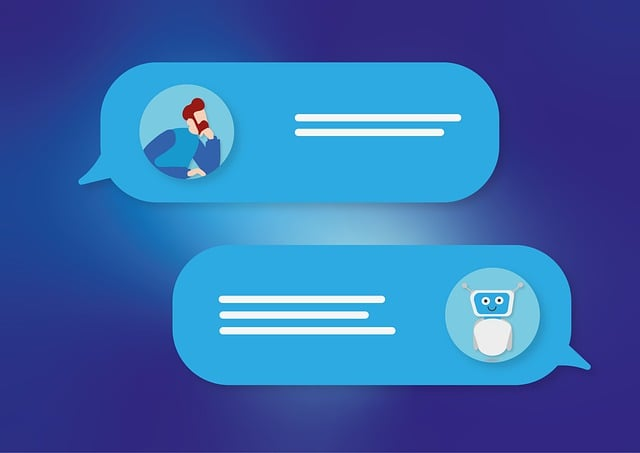
Testing and refining
Testing and refining a chatbot is an essential part of the development process. There are several different types of tests that can be performed to assess the chatbot’s effectiveness and identify areas for improvement.
One type of test is usability testing, which involves observing users as they interact with the chatbot and gathering feedback on their experience. This type of testing can help identify areas where the chatbot may be confusing or difficult to use, as well as identify areas where users may be experiencing frustration or difficulty in achieving their goals.
Another type of test is A/B testing, which involves testing two or more versions of the chatbot with different user groups in order to determine which version performs better. This type of testing can be useful in identifying the most effective responses, the best way to structure conversation flows, and other key design elements.
In addition to these tests, it is also important to gather feedback from users on an ongoing basis. This can be done through surveys, feedback forms, or other methods of gathering user feedback. This feedback can then be used to refine the chatbot and make improvements to the user experience.
By testing and refining the chatbot on an ongoing basis, businesses can ensure that their chatbot is providing the best possible user experience and driving engagement with their brand. This can help increase customer satisfaction, improve customer retention, and ultimately drive revenue growth.
Implementation of Chatbots
When implementing a chatbot, it is important to choose the right chatbot platform, integrate with messaging channels, and successfully deploy and launch the chatbot.
Choosing a chatbot platform
Choosing a chatbot platform is an important consideration when implementing a chatbot. The platform should align with business needs, the chatbot’s functionality, and any desired messaging channels.
There are many chatbot platforms available, ranging from simple drag-and-drop tools to more advanced development frameworks. When choosing a chatbot platform, consider the level of customization and control you need, the size and complexity of your chatbot project, and the availability of integrations with messaging channels.
The following platforms were named in Forbes 7 Best Chatbots in 2023:
- HubSpot Chatbot Builder – This platform is known for its user-friendly interface and ease of use, making it a great option for those new to chatbot building.
- Intercom – Intercom offers a high level of customization for chatbots, making it ideal for businesses with specific requirements and preferences.
- Drift – Designed specifically for sales, Drift is a great chatbot option for businesses looking to improve their sales process and increase conversions.
- Salesforce Einstein – Salesforce Einstein is a chatbot platform that integrates with Salesforce’s suite of products, making it a great option for businesses already using Salesforce for their customer relationship management.
- WP-Chatbot – WP-Chatbot is a chatbot platform designed for WordPress sites, making it a great option for businesses using WordPress as their content management system.
- LivePerson – LivePerson is a chatbot platform that offers omnichannel messaging, allowing businesses to reach customers through various channels such as messaging apps, social media, and SMS.
- Genesys DX – Genesys DX is a chatbot platform that uses natural language processing to understand user input and provide more accurate and relevant responses. It is ideal for businesses looking to provide a more personalized chatbot experience for their customers.
Integrating with messaging channels
Chatbots can be integrated with a variety of messaging channels, including messaging apps, websites, and voice assistants. Some of these messaging channels may include Facebook Messenger, WhatsApp, or Slack. It is important to choose the right messaging channels for your target audience and to ensure that the chatbot is optimized for each channel.
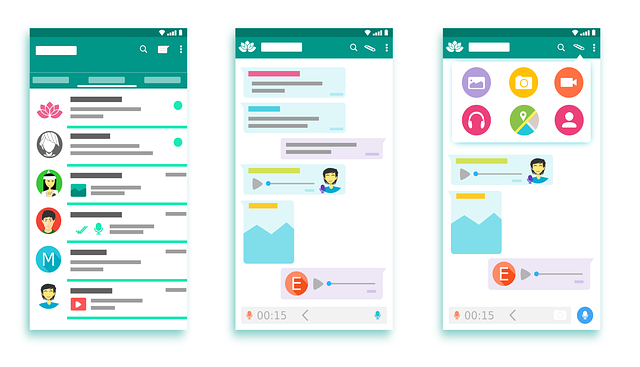
Deploying and launching the chatbot
Once the chatbot is developed and tested, it’s time to deploy and launch it. Consider following these steps during this phase:
- Choose the right timing: Choose a time when your audience is most likely to be available and online. For example, if you’re launching a customer service chatbot, consider launching it during business hours.
- Integrate with messaging channels: As previously mentioned, integrating the chatbot with messaging channels is critical to ensure that it reaches the desired audience. Make sure the chatbot is properly integrated with popular messaging channels such as Facebook Messenger, WhatsApp, or Slack.
- Promote the chatbot: Promote the chatbot through various channels such as social media, email campaigns, and website banners.
- Monitor performance: Keep track of the chatbot’s performance and gather feedback from users to identify areas for improvement. Analyze metrics such as engagement rates, response times, and customer satisfaction.
- Continuously improve the chatbot: Use the feedback from users to improve the chatbot’s performance and user experience. Refine the chatbot’s responses, update its knowledge base, and add new features and functionalities as needed.
Chatbot Best Practices
To ensure a successful chatbot implementation, it is important to follow best practices for providing clear instructions and prompts, personalizing the chatbot experience, using NLP, monitoring and analyzing chatbot performance, and continuously improving the chatbot.
Providing clear instructions and prompts
Providing clear instructions and prompts can help users understand how to interact with the chatbot and what tasks the chatbot can assist with. Clear instructions and prompts should be provided throughout the chatbot conversation, and should be personalized to the user’s needs and preferences.
Some examples of clear prompts include:
- Welcome message: A clear welcome message can set the tone for the conversation and provide instructions on how to get started. For example, “Hi there! I’m here to help you with any questions you have about our product. Just type in your question and I’ll do my best to assist you.”
- Menu options: If the chatbot provides multiple services or functions, a clear menu can be provided to help users navigate through the options. For example, “Here are some things I can help you with: 1. Check your account balance 2. Pay your bill 3. Schedule an appointment. Please select an option.”
- Error messages: When a user inputs an invalid command or if the chatbot encounters an error, a clear error message can help the user understand what went wrong and how to proceed. For example, “Sorry, I didn’t understand that. Please try rephrasing your question or selecting from the options provided.”
- Confirmation messages: When the chatbot completes a task or action, a clear confirmation message can provide reassurance to the user. For example, “Great! Your appointment has been scheduled for Tuesday at 2pm. You will receive a confirmation email shortly.”
- Feedback requests: Prompts can be used to request feedback from the user on the chatbot’s performance or their satisfaction with the interaction. For example, “Thanks for using our chatbot! How was your experience today? Please rate your experience from 1-5.”
Personalizing the chatbot experience
Personalizing the chatbot experience can help increase customer engagement and satisfaction. Personalization can include customizing responses based on user preferences or previous interactions, using the user’s name or other personal information, and providing relevant content based on the user’s interests.
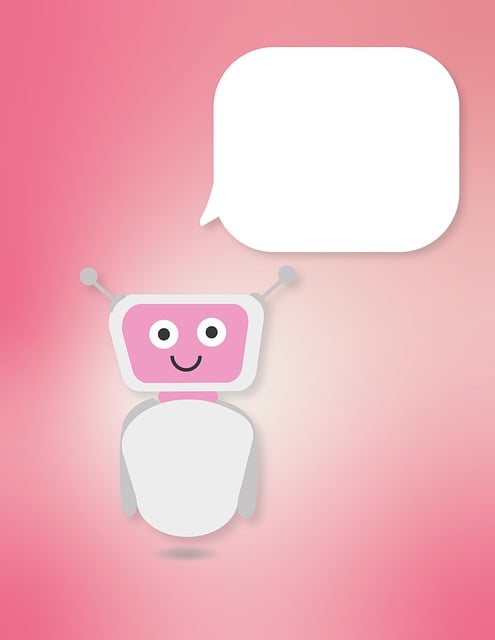
Using natural language processing (NLP)
Using NLP can help improve the chatbot’s ability to understand and respond to user input. NLP can be used to identify keywords and phrases, understand context and intent, and provide more accurate and relevant responses. It is important to continually refine and improve the NLP algorithms to ensure the chatbot is providing the best possible user experience.
There are several ways to refine and improve NLP for chatbots:
- Data Collection and Analysis: Collecting and analyzing data from user interactions can help identify patterns and improve the chatbot’s understanding of natural language. This data can include user queries, responses, and feedback.
- Machine Learning: Machine learning algorithms can be trained using large datasets to improve the chatbot’s ability to understand natural language. This can include training the chatbot to recognize different sentence structures, tone, and intent.
- Natural Language Understanding Platforms: Natural language understanding (NLU) platforms can be integrated with chatbots to improve their understanding of user input. These platforms use machine learning algorithms to analyze user queries and provide more accurate and relevant responses.
- Feedback and Iteration: Gathering feedback from users and continually iterating on the chatbot’s NLP algorithms can help improve the chatbot’s performance over time. This can include monitoring user queries and responses, analyzing performance metrics, and making adjustments to the chatbot’s NLP algorithms based on feedback.
Overall, refining and improving NLP for chatbots is an ongoing process that requires a combination of data analysis, machine learning, and user feedback. By continually improving NLP algorithms, chatbots can provide more accurate and relevant responses, resulting in a better user experience.
Monitoring and analyzing chatbot performance
Monitoring and analyzing chatbot performance can help identify areas for improvement and ensure the chatbot is meeting the needs of customers. Performance metrics to monitor can include user engagement, conversion rates, and user satisfaction. It is important to gather feedback from users and continually refine and improve the chatbot based on this feedback.
Continuously improving the chatbot
Continuous improvement of the chatbot is important to ensure that it remains relevant and effective in meeting user needs. This involves regularly gathering feedback from users, either through surveys or analyzing chat logs, to identify areas for improvement. Based on this feedback, updates can be made to the chatbot’s responses, NLP algorithms, or user interface.
Performance metrics should also be regularly monitored to identify any issues or opportunities for improvement. Prioritizing updates based on user feedback and business goals helps ensure that resources are focused on the most impactful improvements.
Future of Chatbots
The future of chatbots is bright, with advancements in AI and NLP technology and increased adoption in various industries. However, there are also concerns about the potential impact of chatbots on the workforce.

Advancements in AI and NLP technology
Advancements in AI and NLP technology are making chatbots more sophisticated and capable of understanding and responding to human language. This includes advancements in machine learning, deep learning, and neural networks.
One of the most notable advancements is the development of transformer models such as BERT (Bidirectional Encoder Representations from Transformers) and GPT (Generative Pre-trained Transformer). These models have significantly improved the accuracy of NLP tasks, including language understanding and generation.
Additionally, there have been advancements in the field of conversational AI, with the development of new techniques such as reinforcement learning and natural language generation. These techniques enable chatbots to learn from interactions with users and generate more natural-sounding responses.
Another area of advancement in AI and NLP technology is the integration of computer vision and speech recognition capabilities into chatbots, enabling them to understand and respond to visual and auditory cues. This has the potential to greatly expand the capabilities of chatbots beyond text-based interactions.
Overall, these advancements are making chatbots more sophisticated and capable of handling more complex conversations and answers, which has significant implications for their use in a variety of industries, including customer service, healthcare, and finance.
Chatbots in various industries
Chatbots can be customized to meet the specific needs of different industries. For example, in healthcare, chatbots can be used to help patients schedule appointments, provide information about medical conditions, and even monitor symptoms. In finance, chatbots can be used to help customers with basic banking tasks, such as checking account balances or transferring funds. In retail, chatbots can be used to provide product recommendations, answer customer questions, and even facilitate transactions.
Chatbots can help automate routine tasks, provide customer support, and improve user engagement. As chatbots become more advanced and capable, they will continue to play an increasingly important role in industries where customer service and engagement are critical.
Potential impact on the workforce
While chatbots can provide many benefits, there are also concerns about the potential impact of chatbots and artificial intelligence on the workforce. Chatbots have the potential to automate many routine tasks and jobs, which could lead to job losses in some industries.
However, chatbots can also save time so human workers can focus on more complex and creative tasks. Modern chatbot development can provide new opportunities for employment in the development and maintenance of chatbot systems.
Final thoughts
Chatbots have the potential to revolutionize the way businesses interact with their customers and automate routine tasks. By providing 24/7 support, personalized recommendations, and seamless user experiences, chatbots help companies increase customer satisfaction and loyalty. Additionally, chatbots can help reduce operational costs and increase efficiency, making it an incredibly valuable tool.

When building and implementing a chatbot, it is important to consider the following:
- The chatbot’s purpose and audience
- Create a chatbot personality
- Craft responses
- Test and refine the chatbot
- Choose the right chatbot platform
- Integrate with messaging channels
- Deploy and launch the chatbot
- Follow best practices for providing clear instructions and prompts
- Personalize the chatbot experience using NLP and by continuously monitoring performance
As advancements in AI and NLP technology continue to drive the development of chatbots, businesses will be able to provide more sophisticated and personalized customer experiences.
We would be remiss not to state that it is important to consider the potential impact of chatbots on the workforce and to ensure that chatbots are being used in a responsible and ethical manner.
In conclusion, chatbots are a powerful assistant for businesses to improve customer engagement, automate routine tasks, and provide personalized experiences. By following best practices and continually refining and improving chatbots, businesses can stay ahead of the curve and provide exceptional customer service in the digital age.

